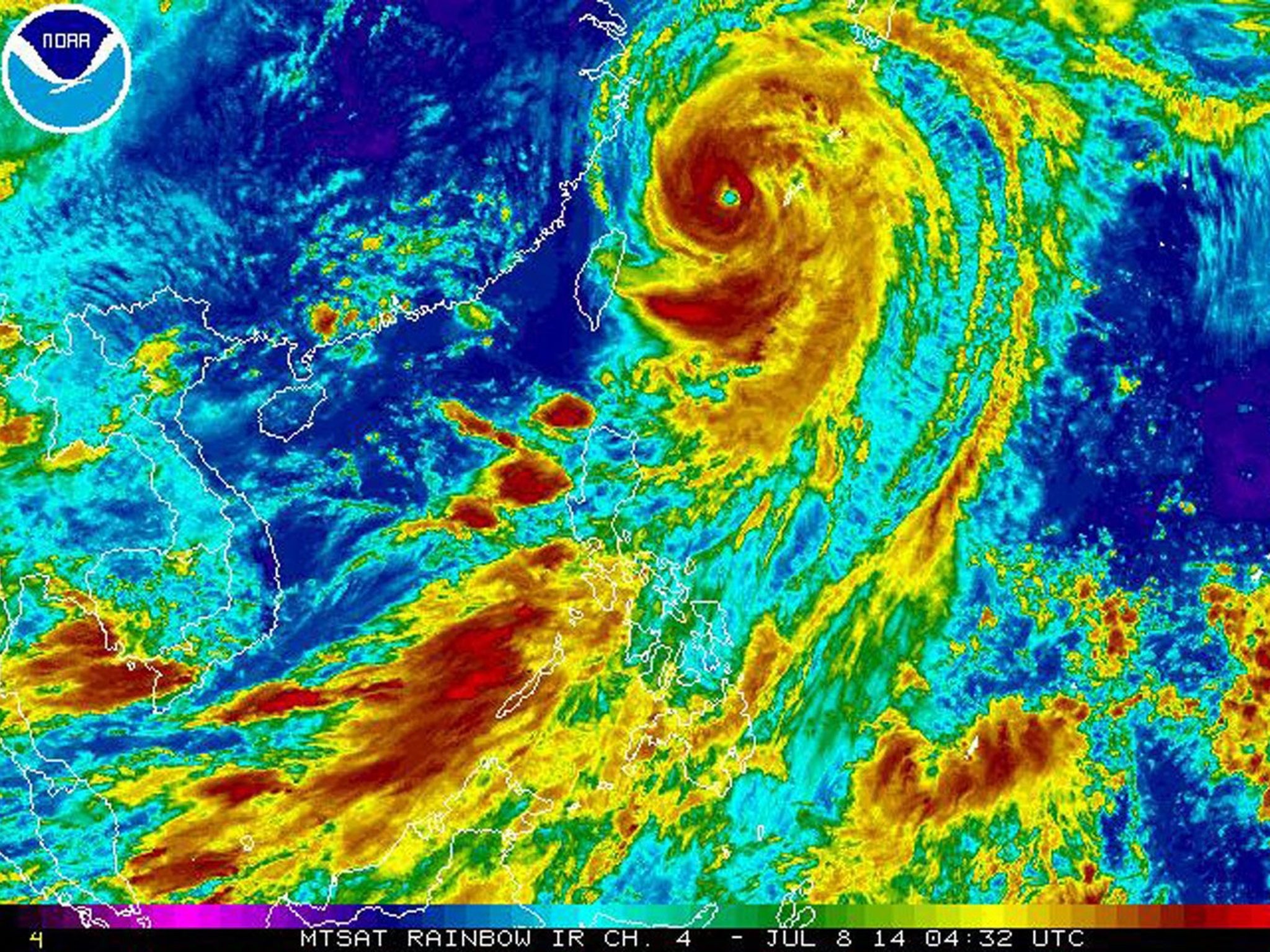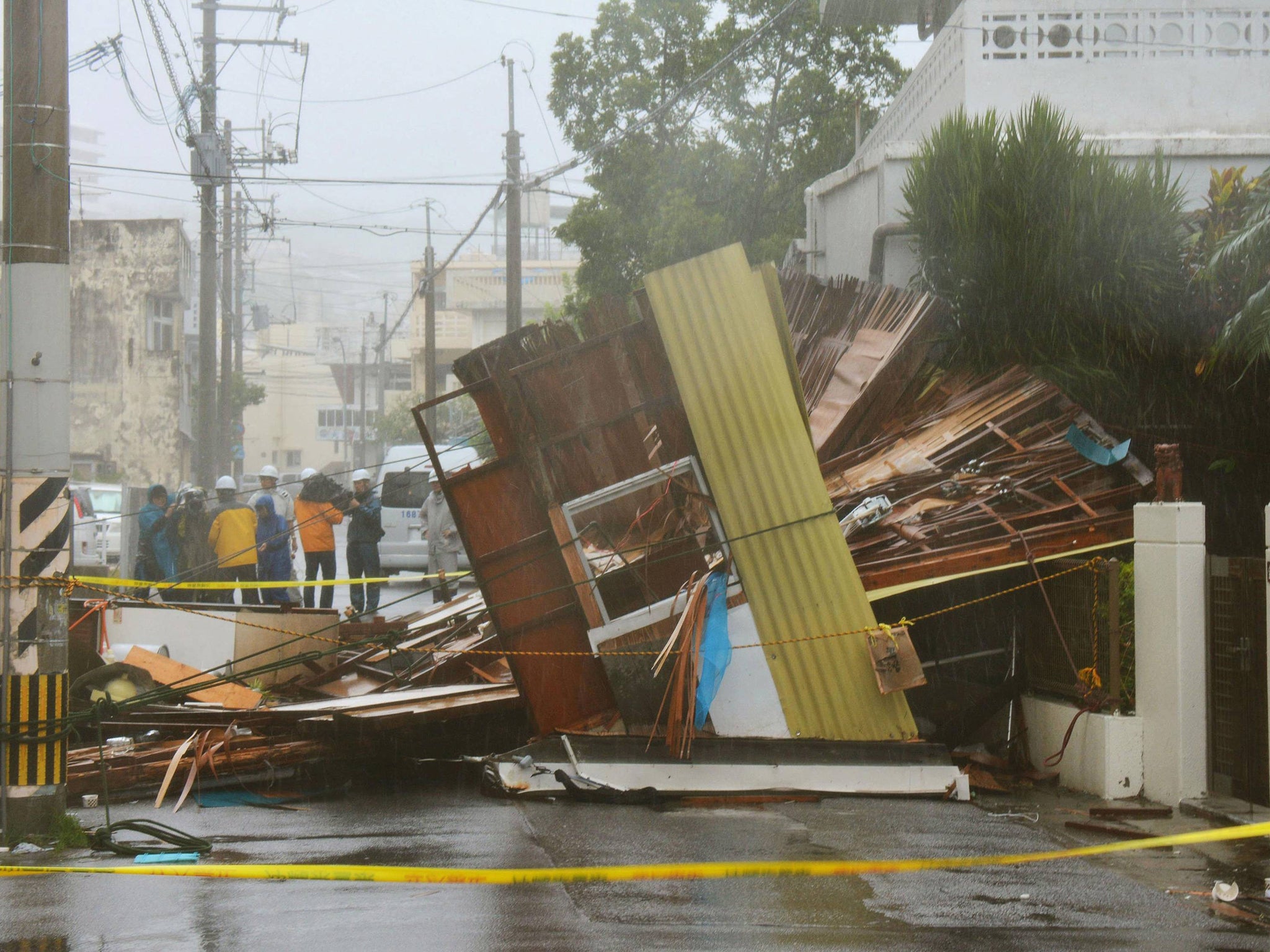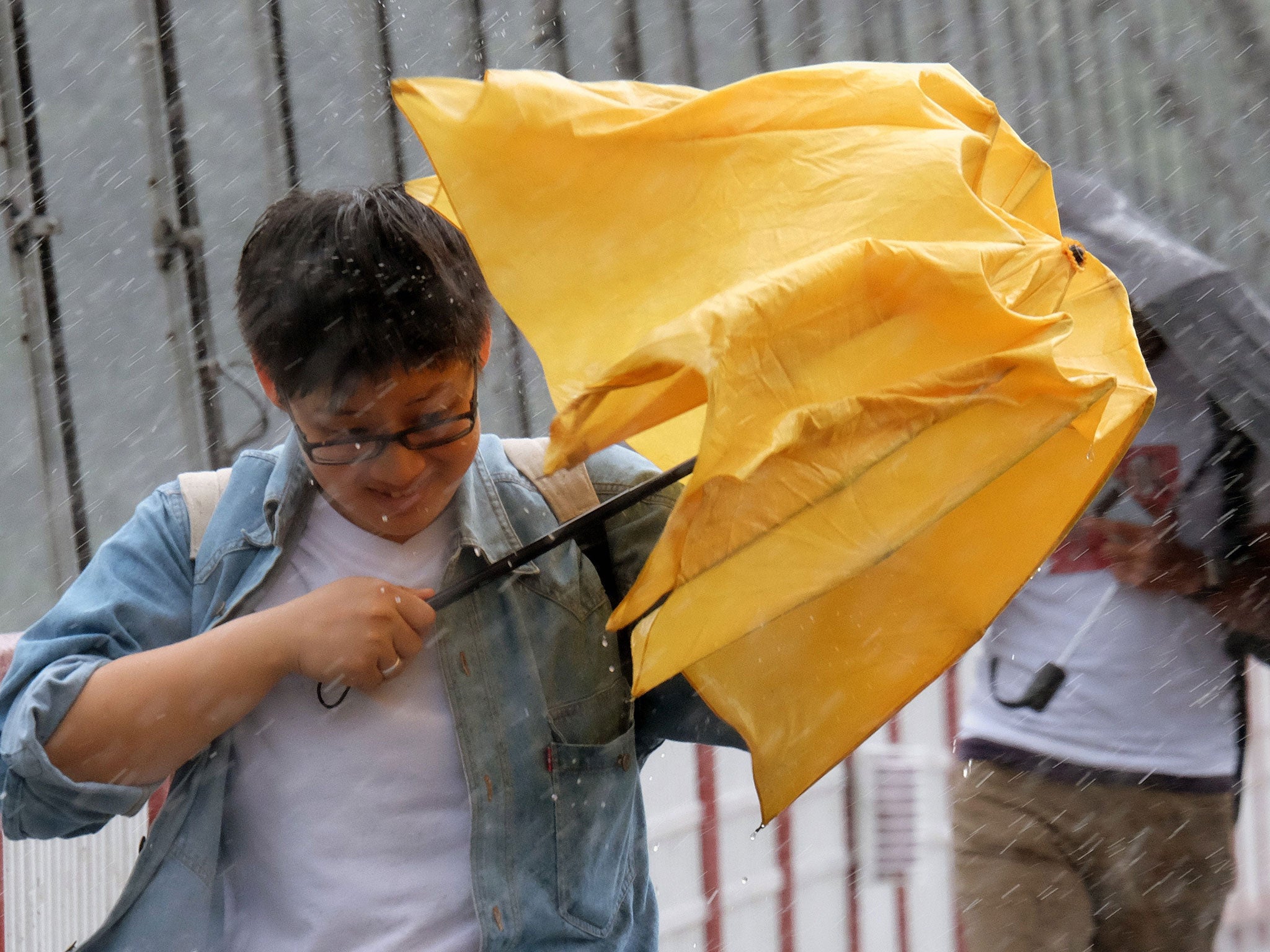Typhoon Neoguri hits Japan causing US base to shut down and transport chaos
One fisherman is said to be missing after his boat was caught in rough seas caused by the typhoon

A powerful typhoon is pummelling the southern Japanese islands of Okinawa, paralysing transport and prompting US forces based there to cancel all outdoor activity.
The Okinawa government has reported that four people were injured, one an 83-year-old woman who suffered a head injury. A man was reported missing from a fishing boat in rough seas off Kyushu, to the north.
One of the strongest and biggest typhoons to hit during Japan's summer months, Typhoon Neoguri was packing sustained winds of 194 kilometers (120 miles) per hour and gusts up to 240 kph (148 mph), theJapan Meteorological Agency said.
Local airports were closed and some 550,000 people were advised to evacuate their homes, though most remained put, taking refuge from the destructive winds, waves up to 14 meters (46 feet) high and storm surges that were set to intensify as the storm passed the main island of Okinawa in the evening.
"Please take refuge as early as possible," said Keiji Furuya, chairman of the National Public Safety Commission.

Since typhoons track along Japan's coasts, often veering onshore every summer, the country is relatively well prepared. Much greater damage is likely from torrential rains if the typhoon hits land as expected on Thursday or Friday and moves across the Japanese archipelago.
The storm was moving slowly and diminishing in intensity, but its wide area and slow movement could add to the potential damage, weather forecasters said.
Authorities in China and Taiwan also warned ships to stay clear of the storm.

Forecasts show the storm tracking toward Kyushu island and then across Japan's main island of Honshu. It is forecast to lose more of its power over land, but much of the damage from such storms comes from downpours that cause landslides and flooding. Such risks are elevated by the storm's timing, on the tail end of Japan's summer rainy season.
The Philippines, which suffered the strongest typhoon to ever hit land when Haiyan struck six months ago, was spared the ferocious winds of Neoguri. The storm did not make land fall and remained about 480 kilometers (300 miles) east of the northernmost province of Batanes, when it roared past on Sunday.
The typhoon did intensify the country's southwest monsoon, dumping heavy rains on some western Philippine provinces.
Neoguri is a Korean word meaning "raccoon dog," a knee-high animal that looks like a cross between a dog and a raccoon but is a separate species common in East Asia.
AP
Join our commenting forum
Join thought-provoking conversations, follow other Independent readers and see their replies
Comments